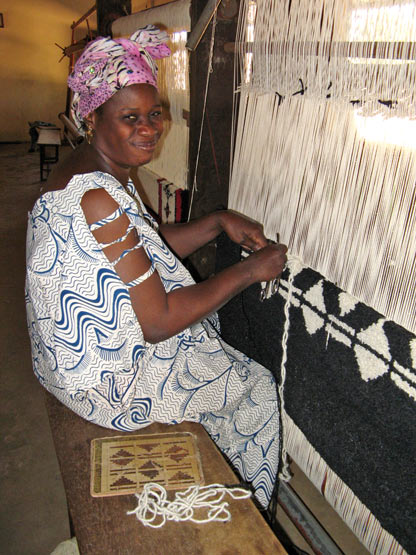November 30 - December 1, 2010
To go Back at any time,
use Browser’s “Previous Page”
Traveling to Segou, we made only one stop at a small village to learn how shea butter is produced. Shea butter is a natural fat extracted from the nut of the African shea tree. It has an incredible number of applications: cooking oil, waterproofing agent, moisturizer, soap supplement, cocoa butter substitute, medicinal ointment base and many, many others. The tree itself can produce copious amounts of sap valuable as a raw material in the gum and rubber industries.
This amazing tree grows naturally in the dry Savannah belt of West Africa from Senegal in the west to Sudan in the east, and into the foothills of Ethiopia. Generally, no one has ownership rights over the trees and gathering is equally open to all.
Shea fruits fall under their own weight when ripe and women gather them by hand. The green-colored fruit has a fleshy, edible pulp surrounding the nut shell that is very sweet. After removal of the pulp, drying, and three days of heat treatment, the shells are easily cracked. The nuts (or seeds) are crushed by mortar and pestle, then roasted and ground in machines that the men operate. Shea butter comes out looking like thick chocolate --- it turns to light yellow only after being mixed with water.
In the photo below, two women are taking turns crushing the nuts:

After only a few strokes, Patty could appreciate the labor involved:

The village looked like something out of the Bible:
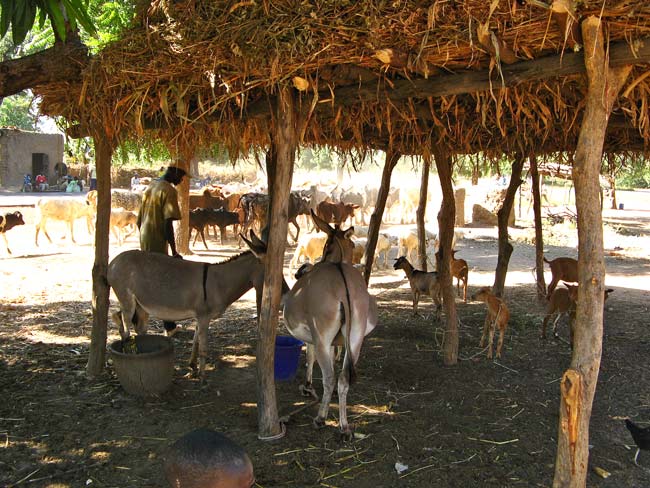
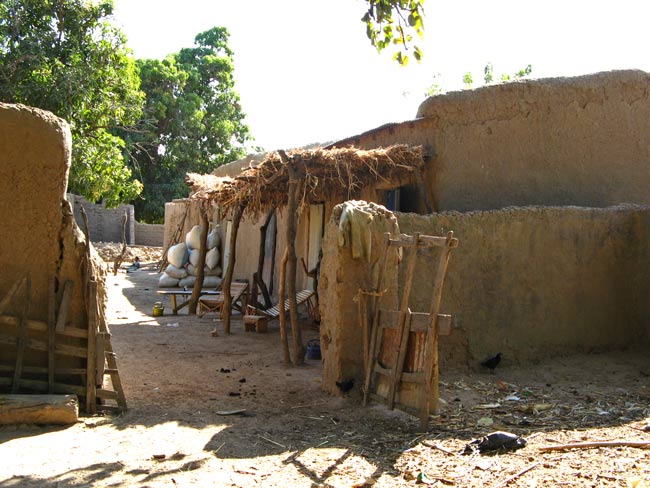
... until our guide Youssouff stepped in front of the camera --- cell phone firmly in ear. Suddenly, we were back in the 21st century:
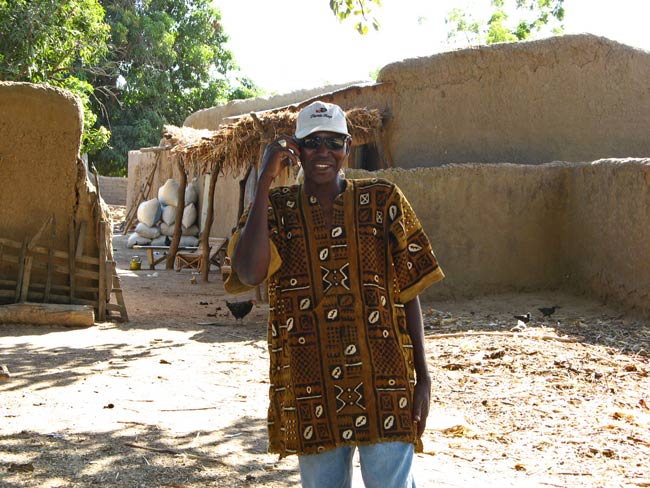
According to Youssouff, his cell phone WAS his office.
In Segou, we visited several shops specializing in native crafts. Some of the buildings were quite attractive; such as, this one:
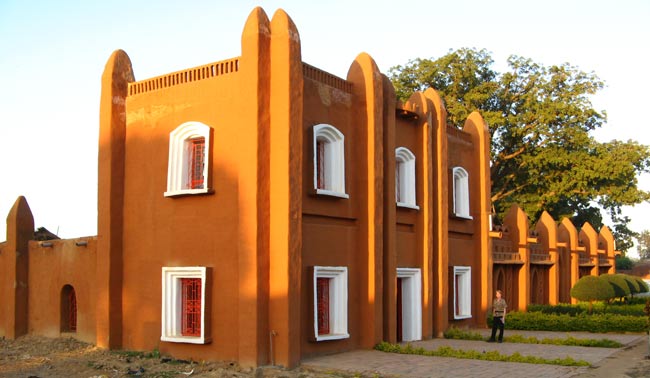
Though it was slightly after closing time, we were allowed in to admire the goods for sale.
While Patty browsed, I was drawn to the riverside view out the back window:
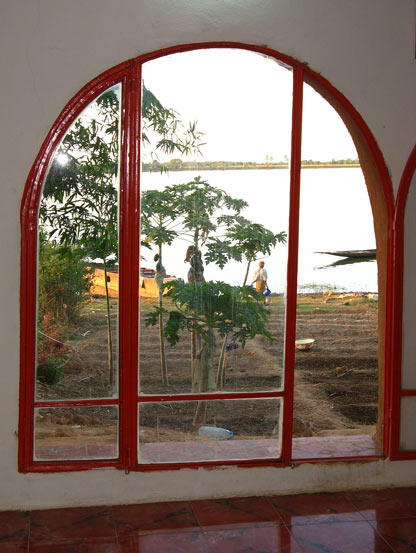
In this art center, which serves as a school for budding artists, we even went to class to learn the techniques of mud-painting or bogolan:
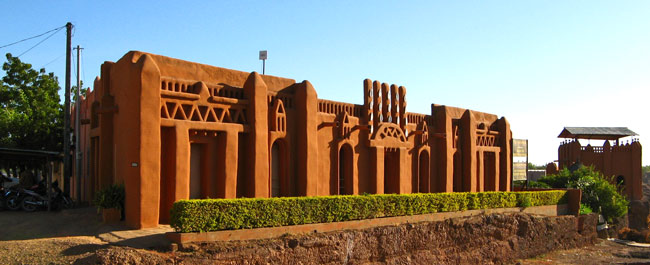
As class begins, our artist-instructor explains how the cotton fabric is dyed before painting. Any of the colors he has displayed on swatches are possible using natural dyes made from leaves or bark:
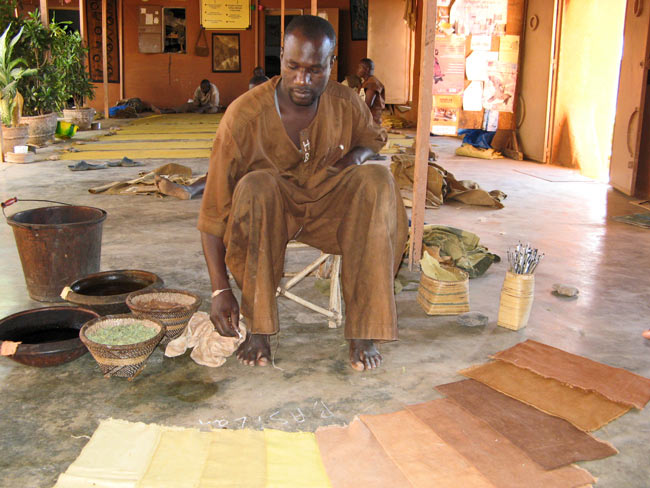
Later, he explained the common symbols seen in bogolan art.
The “paint” applied in bogolan is mud collected from riverbeds and fermented for up to a year. It is applied with brush or stick, after which the cloth is allowed to dry. When the mud is rinsed out, a permanent design remains.
Below, Patty proudly exhibits her creation. “Haven’t had so much fun since kindergarten!”
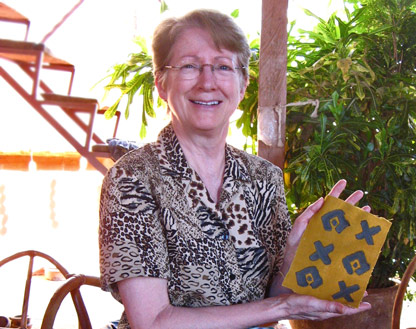
Outdoors, several completed pieces dry in the sun. The two-story gift shop beyond contains bogolan items available for purchase. Every conceivable use of this art form may be found here: pillow covers, wall hangings, ornamental mats, table runners, clothing --- you name it, they’ve got it.
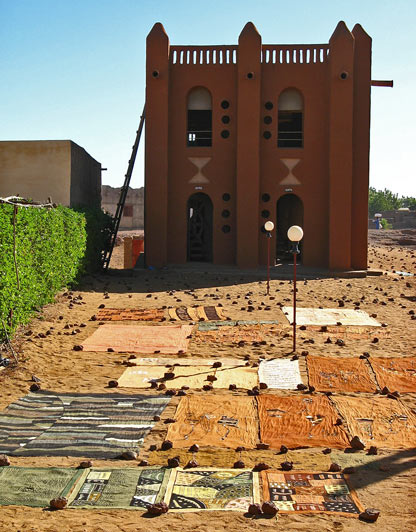
We also visited a women’s association that produces wool rugs by hand-weaving. On the porch, these two seated women and a third off-camera are converting wool into thread:
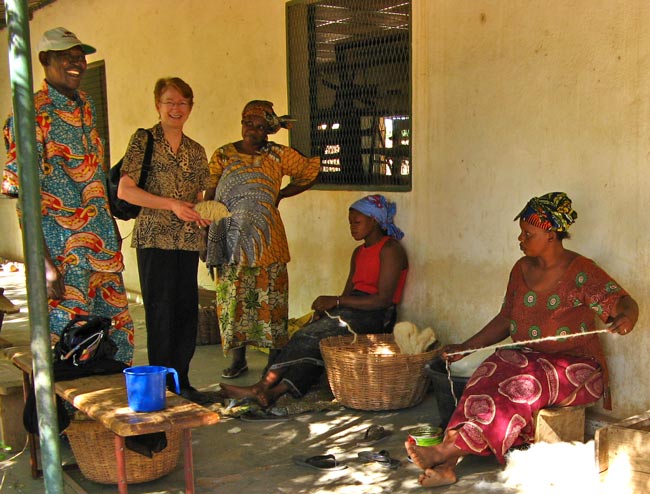
Inside, the thread is transformed into attractive carpets and rugs on looms. After being assured I could take photos, I snapped a picture of this lady and showed her the result on my camera. She immediately realized what was missing: a beautiful smile! This second shot was much better:
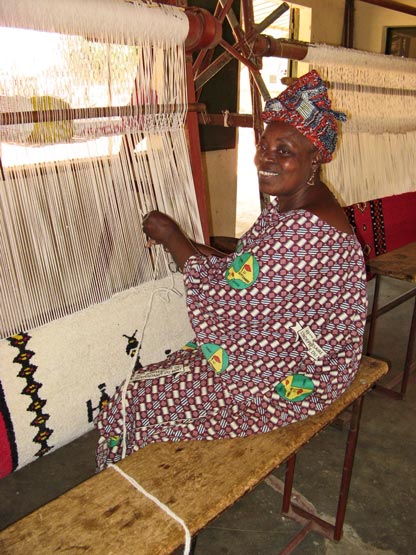
Her co-worker saw her own smiling image on the first attempt:
